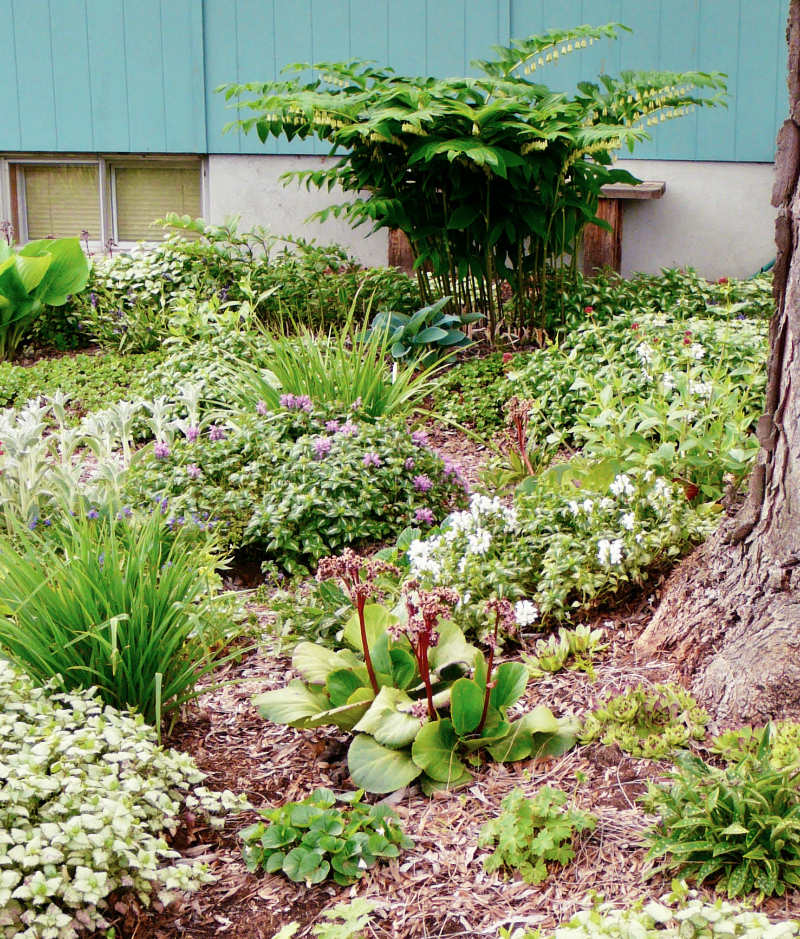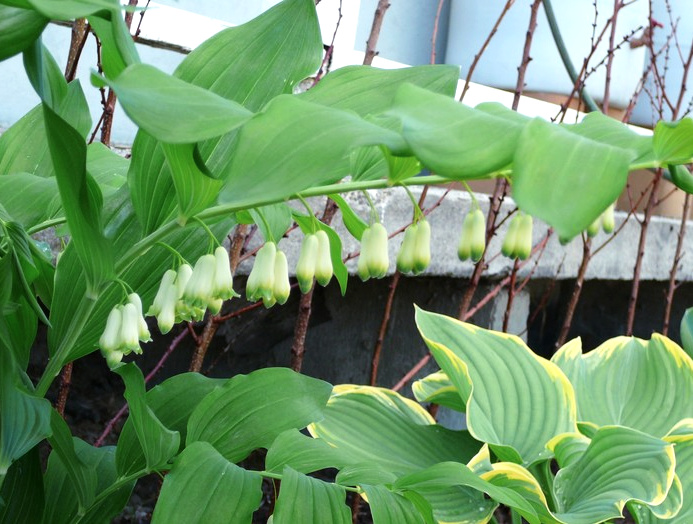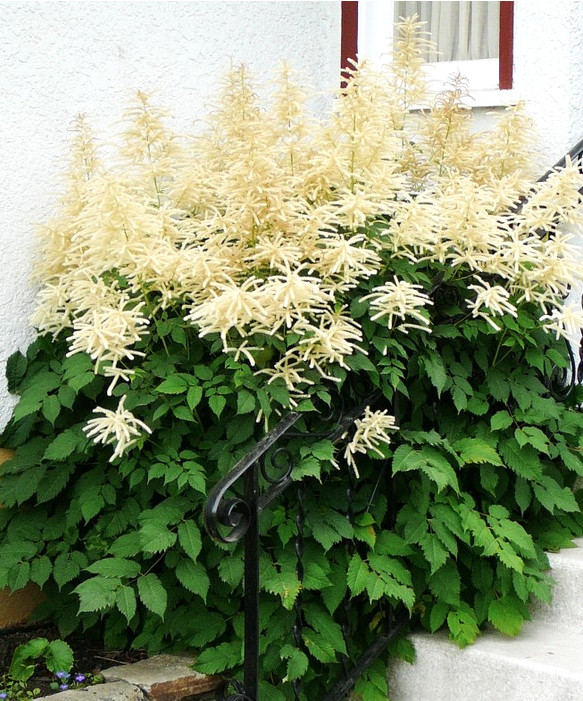Gardening with Nature
Article by Sigrie Kendrick
As our organization has grown, we are now able to source new and different cultivars, significantly expanding the selection of drought-tolerant plants available for our annual plant sale and displayed in our demonstration gardens. All are carefully selected and have been propagated from either seed or baby plants and have been successfully grown in gardens throughout the Okanagan Valley.
As a self-professed plant addict, poring over wholesale seed catalogues in the depth of winter, dreaming of spring, makes it extremely difficult to refrain from ordering it all.
But I asked myself, ‘What is a constant challenge for gardeners?’

A graceful Solomon’s Seal, or Polygonatum commutatum ‘Giganteum’ shows off in bloom at the back of this dry, shady xeriscape garden, with a variety of Lamium and a Bergenia in front.
One challenge that resonated with me was growing in dry, but shady beds, so I have found several plants that perform well under those conditions.
A truly stunning perennial for those dry, shady spots is Polygonatum commutatum ‘Giganteum’ which is often referred to as an architectural plant in the garden because of its graceful shape.
Commonly known as Solomon’s Seal, it features showy pale green fern-like leaves that stand out in a shade environment and provide interest throughout the growing season, even while not in bloom.
The blooms of Polygonatum commutatum appear in late spring and also stand out in the shade. They are a creamy white, with a tubular, bell-shaped form and are pleasantly fragrant, drooping beneath the ferny foliage. Those are followed in fall by deep purple berries.
Solomon’s Seal is best planted towards the back of the border due to its size, reaching up to seven feet in height in ideal conditions. Native to Eastern North America, it is poisonous, so makes an excellent choice for gardens browsed by deer.


Another spectacular choice for a dry shade garden is Aruncus dioicus, commonly known as Goat’s Beard.
This is also a large perennial reaching 4-6 feet tall with a spread of 2-4 feet.
Aruncus dioicus is often confused with Astilbe as it features similar foliage and flower form.
The showy plumes of creamy-white flowers bloom from early to mid-summer and attract both bees and butterflies.
Aruncus dioicus is hardy in zones 3-7, so is an excellent choice for shade gardens throughout the Okanagan.
A fantastic under-story plant that can be treated as a living mulch under these two behemoths is Lamium maculatum.
Commonly known as Spotted Dead Nettle, it is a mat-forming herbaceous perennial that serves as an effective weed-suppressant.
The cultivar ‘Beacon Silver’, features silvery heart-shaped leaves with a green edge. ‘Beacon Silver’ blooms in shades of lavender in late spring and is exceptionally long-blooming, continuing sporadically through to autumn.
Lamium maculatum spreads quickly as the stems will root where they touch the soil. This tough perennial is virtually pest and disease-free and not favoured by deer.
Peruse our plant database for more specific information on these and the many xeriscape plants well-suited to our semi-arid environment.
